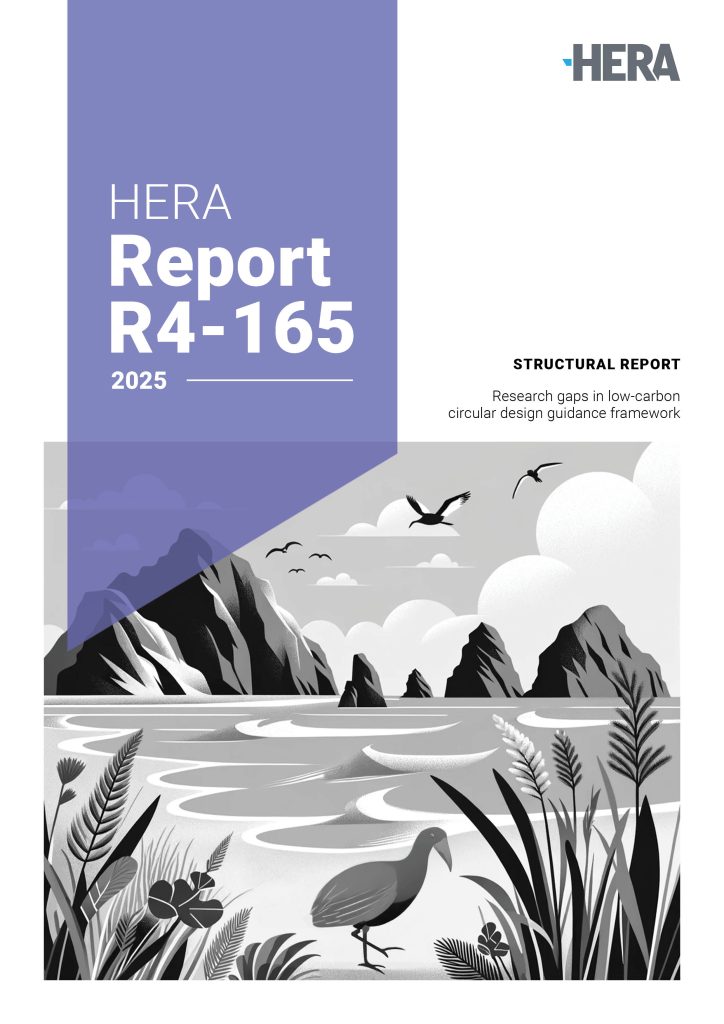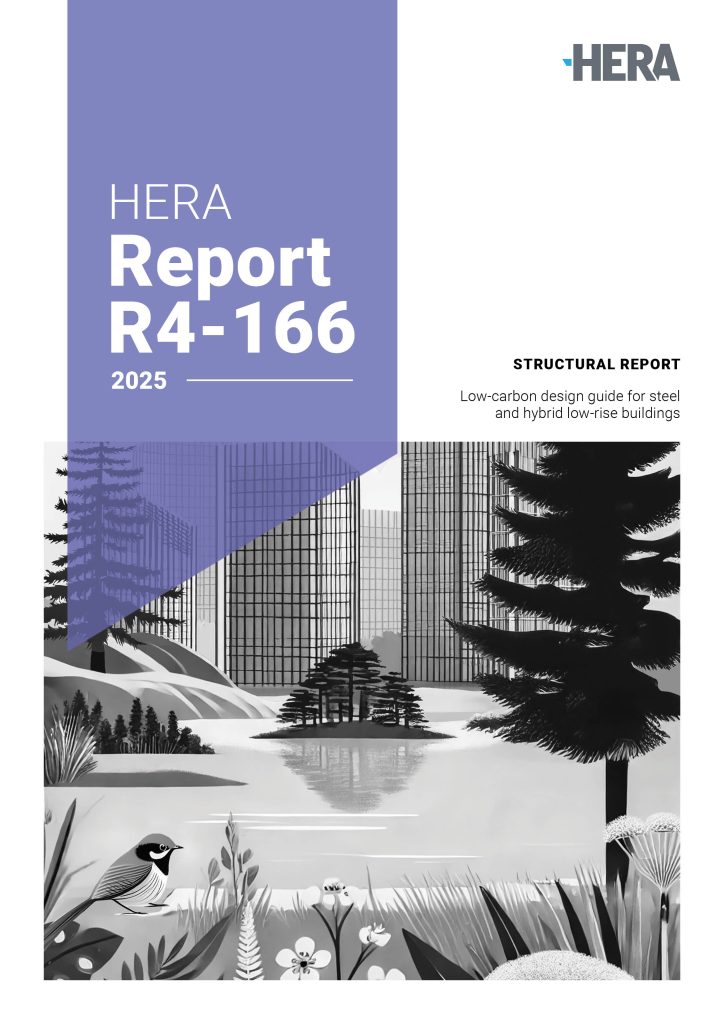With a growing urgency to reduce carbon emissions and embrace circular economy principles – we’ve got the tools to help!
HERA is proud to be releasing essential guidance to give industry professionals the knowledge and strategies to design more sustainable and resilient buildings – launching three pivotal resources, built on extensive research to help you stay ahead in low-carbon circular design.
R4-164: A low-carbon circular building design guidance framework
This is a ready-to-use framework that applies to any material, building typology, or system – giving you the tools to design smarter, without starting from scratch.
Key highlights include:
- the HERA low-carbon circular design hierarchy – a practical and clear roadmap to navigate circular and low-carbon strategies visually for both new and existing buildings, as well as understand how these concepts integrate;
- a simplified overview of Life Cycle Assessment (LCA) and circularity – cutting through the complexity so you can confidently assess whole-of-life carbon impacts;
- a toolkit of practical solutions – providing actionable strategies you can apply immediately to achieve low-carbon circular design; and
- A template for preparing specific design guidance – helping you create specific design strategies to achieve the lowest whole-of-life embodied carbon and material or system circularity in your project.
This Framework is evidence-based, considers whole-of-life impacts (Modules A-D of EN 15978:2011), and encourages a cradle-to-cradle approach – setting the stage for future advancements in dynamic LCA approaches.
R4-166: Low-carbon circular design guide for steel, and steel-hybrid low-rise commercial buildings
Building on the framework, this design guide offers specific guidance to cut embodied carbon by over 50%, while making buildings more adaptable, future proof and optimised.
Key highlights include:
- real world case studies – showing how smart design and specification cuts carbon emissions in half (or more);
- strategies to extend building lifespan – focusing on longevity, adaptability, and disassembly;
- superstructure systems and material insights – so you know how your choices impact on whole-of-life carbon outcomes;
- design for circularity – to understand how to plan for reuse, minimise waste and significantly reduce emissions; and
- reduce operational carbon – optimising energy efficiency by addressing thermal bridges, incorporating suitable thermal insulation, and utilising efficient technologies such as heat pumps.
Industry professionals can take immediate, practical steps to reduce your project’s environmental footprint commercial buildings without compromising design or function – while promoting circular economy principles.
R4-165: Research gaps & next steps for advancing low-carbon circular design
Along the way we’ve uncovered some critical knowledge gaps to be addressed.
This report outlines:
- identified research priorities – insights from industry experts, literature reviews, and peer feedback;
- opportunities for collaboration – so you can be part of the movement shaping the future of low carbon circular construction amongst researchers, policymakers, and industry leaders; and
- pathways for innovation – keeping up with emerging materials, technologies and methodologies.
Let’s shape the future together!
At HERA, we’re committed to empowering industry professionals and securing the future of the construction industry through innovation and research. As an impact-led association our insights and frameworks, are making it easier to navigate the low carbon, circular economy – so you can build with confidence, adopt global best practice and lead change.
These publications mark a significant milestone in HERA’s mission to drive sustainability in the construction sector, and provides a strategic roadmap for architects, engineers, and policymakers striving to create a more sustainable built environment.
Want to know more? Stay tuned for further discussions, training sessions, and opportunities to contribute to get involved. Let’s build a future where innovation, sustainability, and resilience go hand in hand!
Nā (Author)
Kaveh Andisheh
Panuitia! Read on hera.org.nz




